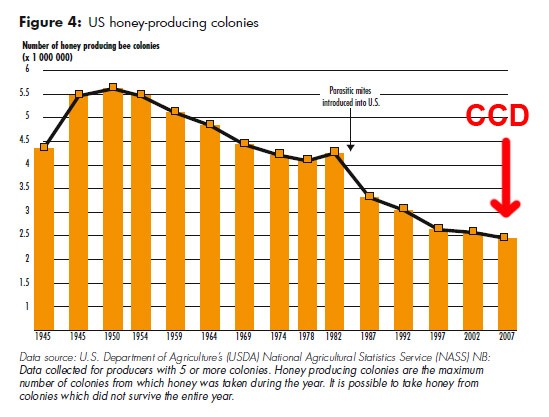On Wednesday, February 8, 2017, Cody Stephens became the 59th person in Shelby County to die from a heroin-fentanyl overdose. He was 29. Cody’s mother, Sharon Stephens, remembers being told that fact by police the afternoon she learned her son had died. It didn’t seem possible. Not her child, the gregarious, fun-loving kid she remembered and loved.
“Everywhere he went, people gathered to him because he was the kid who was funny, very athletic, and good at everything,” she says.
Cody’s introduction to opioids started innocently enough, following a hip injury he sustained while playing baseball at Bolton High. At 18, he was prescribed Lortab, also known as hydrocodone, to manage the pain. But it wasn’t long before the teen discovered “he liked the way pills made him feel,” says Stephens.
Vicodin, OxyContin, morphine, and fentanyl are opioid-based medications often prescribed by doctors to help ease pain and discomfort following surgery. Additionally, these medications give users a sense of euphoria and relaxation. Like many teenagers, Cody experimented with weed and Xanax in high school. But opioids are a different animal. They alter the brain’s chemistry by attaching to opioid receptors, thereby creating cravings and an ever-increasing demand for more pills as tolerance to the drug builds.
For some, what starts as pain management gradually morphs into addiction. As his dependence grew, the number of pills Cody took escalated. The spiraling expense of chasing a high took its toll, too. He couldn’t hold a steady job. He stole. And when his habit finally grew too costly, Cody turned to a cheaper alternative — heroin. He was 23.
“It’s like the drug took over. He couldn’t look in the mirror and see himself,” Sharon explains. “You become a slave to addiction. It sucks you in and you can’t let it go.”
He didn’t travel this dark road alone, however. Cody lost a number of friends to addiction. “How many?” his mother pauses a moment. “Maybe 12 or 13? It’s hard to keep track.”
In fact, Cody Stephens is just one of a legion of young Americans who have been lost to the opioid epidemic. Opioid-related overdose claims at least three lives every day in Tennessee. Nationally, deaths from opioid and heroin abuse have steadily climbed over the past decade. With 42,249 lives lost in 2016, according to the Centers for Disease Control and Prevention, drug overdose is now the leading cause of death for Americans under 50.
For families whose children’s lives have been hijacked by drug dependence, the road to recovery can be a frustrating, lengthy, heart-rending, and expensive journey. Law enforcement frequently becomes part of the story, too, as users turn to crime to help pay for their habit.
“Cody began stealing from Target and Walmart, small items he could resell,” his mother recalls. Then, belongings at their home and around the neighborhood began to turn up missing: air compressors, lawn equipment, a shotgun, even Sharon’s wedding rings. All for quick cash and the next high.
“I was ashamed to even go outside for a while. I still loved my son, but I was in disbelief as to what he’d done,” says Stephens. “I thought, ‘There’s something deeper going on. This isn’t Cody.’ Seeing your son deteriorate before your eyes? You just feel helpless — and hopeless.”
A Public Health Crisis
In 2016, 1,631 Tennesseans died from a drug overdose. In Shelby County, between 2013 and 2016, 474 lives were lost, according to health department data. Opioids are the main driver. As this public health crisis rages on, state and local government has finally begun to amp up the resources necessary to reduce deaths and deliver the services urgently needed for recovery. Governor Bill Haslam’s proposed 2018-2019 budget earmarks $30 million in state and federal funds to tackle the problem.
Locally, on May 14th, the Shelby County Commission’s Opioid Task Force unveiled a comprehensive, $2.4 million plan that creates a partnership between city and county government, law enforcement, the health department, and other health-care agencies to more effectively address opioid abuse. The four-pronged plan focuses on county-wide data collection and mapping of heroin deaths and overdose locations, prevention education, treatment, and law enforcement aimed at slowing opioid trafficking.
One preventative measure that’s making a difference is having Narcan (naloxone) more available to the community. Nurse Jill Carney with the Memphis Area Prevention Coalition has trained more than 500 first-responders, medical and rehab professionals, and family members on how to administer the drug, which revives someone who has overdosed.
“We used it and it has saved three lives at our Sober Living house,” says Walter Williams, executive director of MidSouth Sober Living. “Hopefully, with more information, people will draw a line in the sand so they won’t try heroin because they know too many people who have died.”
The state has earmarked $2 million in funding to treat opioid addiction using Suboxone, a medication-assisted treatment program. Centers like MidSouth Sober Living and CAAP, Inc. (Cocaine Alcohol Awareness Program) are partnering with the Addiction Science Center at the University of Tennessee Health Science Center (UTHSC) to provide the drug and rehabilitation services that can help users toward sobriety.
Center director Daniel Sumrok, a physician, has been using medically assisted treatment along with trauma therapy with his patients for more than a decade. He likens addiction to a chronic illness, which must be treated, and says drugs like Suboxone can effectively help to manage cravings and stabilize patients’ lives.
“Most were living in a car and had stolen from those they knew,” he observes. “Now, they’re more stable, they’re better parents, and they’re more reliable because they aren’t chasing the next high,” he says.
While Sumrok sees first-hand the evidence that MAT can help people manage addiction, members of the treatment community remain decidedly divided between total abstinence (managing sobriety without drugs) and medically-assisted treatment for addiction.
Fighting the Addiction
For parents, sometimes just recognizing that an adult child is struggling with addiction can be challenging. Many mask drug dependence and successfully hide their habit from family members.
As a nurse, Terri Fick knew first-hand the addiction issues that could result when treating pain with OxyContin or hydrocodone. So when her son, Kevin, had reconstructive surgery to repair a knee injury at age 21, she made sure his pain management was appropriate.
“He had morphine for surgery, but there were no meds for chronic pain. I’d had patients with chronic pain that led to addiction. I didn’t want him going down that path,” she says. She even talked about the dangers of addiction with her four children.
But Kevin had also endured surgeries earlier in his life to correct the effects of congenital scoliosis. The fusing of 15 vertebrae left him with a limited range of motion and self-consciousness about his appearance. As he grew older, he experienced bouts of anxiety and depression. Fick says his addiction to Percocet (made with oxycodone) started sometime after the knee surgery, though she has no idea how long he actually used.
When she finally did realize his addiction, they sent him to a treatment facility in Alabama, where he stayed for two weeks before returning home. Fick only learned of his heroin use when Kevin died of a fentanyl-laced heroin overdose on November 4, 2015. He was 25.
“I never thought Kevin would use heroin. I was shocked. But young people don’t have the stigma against heroin that once existed,” she says. “Drugs today are less forgiving. Experimenting now can be life or death — with fentanyl, you don’t get a second chance.”
To cope with their loss, Fick and her husband, David, sought counseling at the Kemmons Wilson Family Center for Good Grief, and participated in a parents grief support group at Collierville United Methodist Church. She now speaks at area high schools and runs Remembering Kevin’s Light, a nonprofit that distributes new and used sports equipment to inner city youth programs.
“We went the sports route because Kevin loved sports,” says Fick. “The nonprofit gives me purpose again. You want to keep their memory alive and talk about his life. We take gift bags to a recovery residence in Southaven and tell Kevin’s story. We say, ‘We care about you.’ Maybe we can make some good come out of a tragedy.”
Breaking the Silence
The difficult part of living with addiction is the silence and secrecy that surrounds the subject. Addiction is not easily broached. Parents wrestle with a mix of shame, guilt, anger, and anxiety trying to manage and/or fix an adult child’s life that has spun out of control.
“I think families have a lot of shame. You don’t want people to think badly of you,” Fick says. “Heroin use goes on a lot, but people keep silent about it. I think my son was too embarrassed and ashamed to come forward for help. I think the stigma keeps people from getting help.”
Tackling that stigma was part of the focus of a recent conference entitled Faith and the Addicted Brain held at the University of Memphis. Approximately 150 church members gathered to learn more about the epidemic and how congregations can better respond to those in need.
One speaker, Stacie Glover, says using drugs helped her numb feelings of abandonment by parents too involved in their own drug use to care for her. “I had a family of addicts and alcoholics,” she says. “Drugs helped me escape from my issues. I wanted to stop using, but I didn’t know how.” At The Salvation Army’s Renewal Place, Glover found new direction and began her recovery. Today, she works as a case manager for the organization and is in college pursuing her master’s degree.
The hope is that churches will borrow a page from places like Collierville UMC and Christ Church Memphis, where their No Whispers Initiative provides support and counseling to families who struggle with mental health and addiction issues. Butch Odom, director of behavioral health at Church Health, says his organization is actively training people in mental health first-aid, offering eight hours of training that “teaches participants how to ask questions to help others get the help they need,” he says.
Sumrok firmly believes trauma-informed therapy can be most effective in helping those with addiction begin to understand the root causes behind why they self-medicate. Angela Quadrani, a treatment consultant with American Addiction Centers, agrees, saying addressing addiction requires a multi-disciplinary approach.
“We need doctors, nurses, nurse practitioners, mental health behavioralists to treat the actions behind why people use,” she says. “It might be anxiety, depression, or some other trauma.”
How to Intervene
Being able to talk about drug use is one thing, getting help is quite another. Sometimes, families bring in an interventionist to convene a family meeting and confront the drug user about their problem.
“There’s a small window of opportunity when an addict wants help,” notes Jack Wyatt, executive director of the Memphis Area Prevention Coalition. “If you put them on hold for 24 to 48 hours, you lose that opportunity to give them help. And it can be another year before they hit bottom again and seek help.”
That means being able to find a detox bed quickly, which often isn’t the case. Going into detox for opioid use is painful and requires medical oversight. (Unassisted withdrawal may not be life-threatening, but it can lead to relapse.) Getting clean takes three to seven days, depending on how much the individual has been using, but cravings can often take months to subside.
“The biggest barrier in Memphis is that most treatment centers are not set up to do medical detox, and the few that do require insurance,” says Wyatt. “Most heroin addicts don’t have insurance.”
Quadrani tells of a 29-year-old opioid addict she’d been working with who was admitted to Regional One’s emergency room. Even though the young woman was 13 weeks pregnant and wanting to get off pills, because she had public insurance from Arkansas, Quadrani couldn’t find her a detox bed. “She’s carrying another life, yet she’s the hardest to find a bed for. If she’d had private insurance, she would have been a shoo-in.”
Following detox, a patient checks into rehab for seven to 28 days, with some extended residential or halfway houses stretching services to 90 days. However, once a user returns home, the challenge is not to fall back into old habits. That’s where sponsors and Al Anon or Narc Anon meetings play a role in helping users stay clean.
Rehab is not a one-time process. Many users relapse and return to rehab numerous times before finding lasting sobriety. “Some people need five or six times in treatment before it finally clicks,” notes Myron Edwards, clinical supervisor at CAAP. “That’s why you can never give up on someone, no matter how many times they go to treatment.”
“I needed community support and outpatient care,” adds Wyatt, whose own drug habit kept him on the streets for several years as a young adult. “Everyone in my life had given up on me but one person, and he’d call to say, ‘Hey, I think you’re gonna be all right.’ And that made all the difference in the world to me.”
While the constant state of drama drug dependence brings can be difficult and expensive for families, parents must be willing to be part of the recovery process, too. “One person with an addiction impacts all of the family,” says Edwards, “though they aren’t usually aware of the impact until members sit down with someone to show the ways in which it impacts them.”
The Lingering Impact
Sharon Walker’s son Ryan had completed 30 days of rehab when he overdosed on heroin at age 27 two years ago. He died alone in a hotel room, just four days after leaving rehab. Experts say users are most vulnerable to relapse at that time, and the possibility of death is real.
“That’s frequently the most dangerous time,” notes Sumrok, “since their tolerance is down and they’ll go back and use the same dose again.”
Ryan left behind a young son who was born drug-addicted. Now a chatty, sunny 2-year-old, there’s little evidence of his difficult start in life. In addition to she and her husband raising Carter, Walker also oversees her nonprofit, Remembering Ryan. She sends sound machines and layette items to caregivers of drug-exposed babies and mothers in recovery.
“I often wonder how we missed this. I wasn’t the cool parent. We would never have guessed it was heroin,” she says. “We couldn’t save our own son, and that makes me feel so powerless. But if I can talk about it and my story can save one person, then I can make a difference.”
RESOURCES
• Kemmons Wilson Family Center for Good Grief
Counseling for individuals who have lost a loved one.
• Memphis Addiction Help
A service of Church Health, this prevention and education website has
links to a variety of services, including detox, treatment, family and church support.
• Memphis Area Prevention Coalition
The coalition provides Narcan training, peer-to-peer support for users,and treatment information.
• TN Redline
(800) 889-9789
Addiction treatment referrals. Callers can connect with treatment providers in their area.
• TN Together
This state-run website provides drug education, prevention, and treatment resources. Also includes county-by-county data on drug overdose.
• UT Addiction Medicine • universityclinicalhealth.com/search-symptoms/
Help for people who struggle with addiction issues, including medically-assisted treatment for opioid use. Click on Practices and then UT Addiction Medicine
ONLINE RESOURCES •
Allies in Recovery
Website focuses on helping family members learn new ways of addressing and thinking about substance abuse and the issues it raises with loved ones who use.
• Lost to Opiods
By the National Safety Council, this site memorializes the thousands who have died from opioid abuse. Family members contribute pictures and stories of loved ones.
• Memphis War on Heroin
Private Facebook group that shares information and education on heroin use and treatment.
PARENT-LED NONPROFITS
• Cody’s Closet
Collecting clothes for people leaving recovery and prison.
Contact: Message Cody’s Closet on Facebook
• Remembering Kevin’s Light
Collecting new and gently used sports equipment for programs that serve inner city youth.
Contact: rememberingkevinslight@gmail.com or message Remembering Kevin’s Light on Facebook
• Remembering Ryan
Helping drug exposed babies, caregivers, and mothers in recovery with their children.
Contact: Sharon Walker — sharwalker6@gmail.com
 Jermel Tucker
Jermel Tucker 





 Courtesy of Center City Commission
Courtesy of Center City Commission  Courtesy of Memphis Farmers Market
Courtesy of Memphis Farmers Market  Courtesy of Memphis Farmers Market
Courtesy of Memphis Farmers Market 








 Greg Akers
Greg Akers